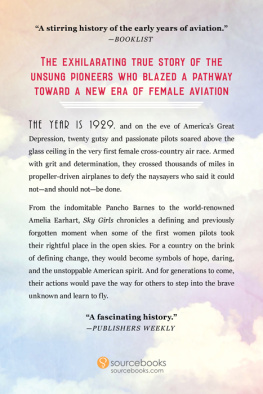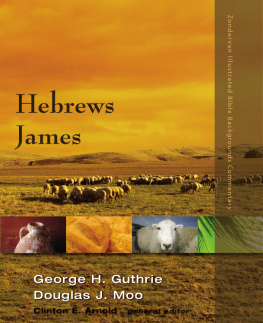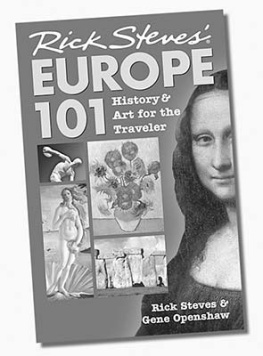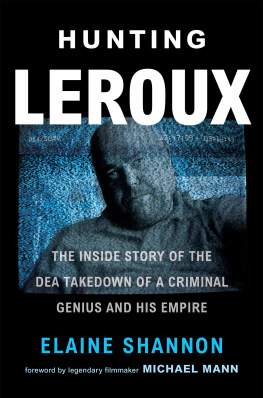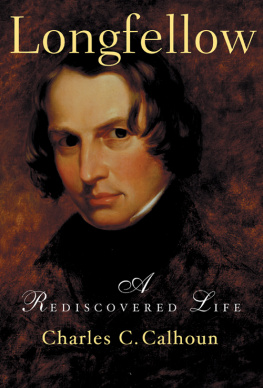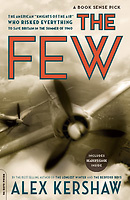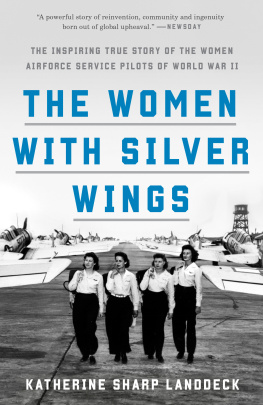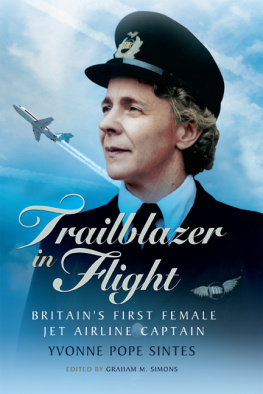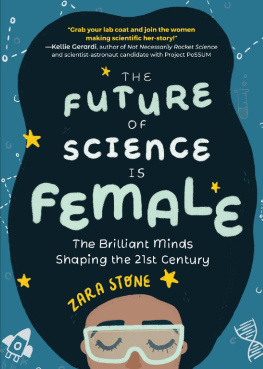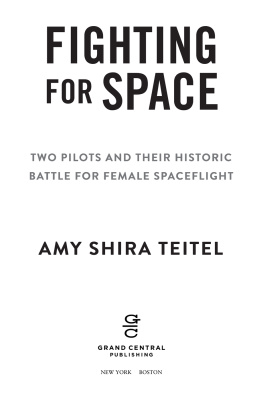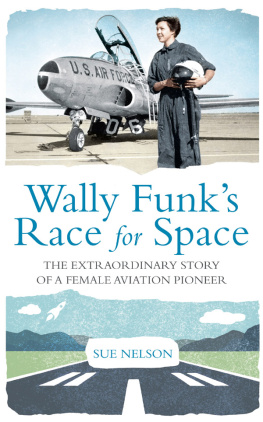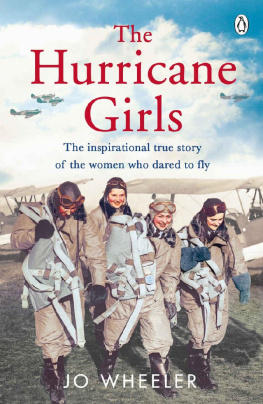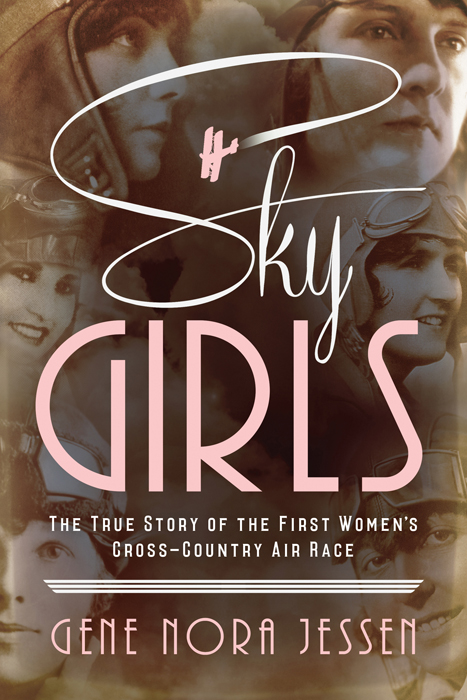Copyright 2002, 2018 Gene Nora Jessen
Cover and internal design 2018 by Sourcebooks, Inc.
Cover design by The Book Designers
Internal design by Jillian Rahn/Sourcebooks, Inc.
The women featured on the cover, starting from the top right corner and working clockwise, are Gladys ODonnell, Ruth Nichols, Thea Rasche, Amelia Earhart, Ruth Elder, and Mary Haizlip.
Images courtesy of the Ninety-Nines Museum of Women Pilots and the Thaden Family Collection.
Sourcebooks and the colophon are registered trademarks of Sourcebooks, Inc.
All rights reserved. No part of this book may be reproduced in any form or by any electronic or mechanical means including information storage and retrieval systemsexcept in the case of brief quotations embodied in critical articles or reviewswithout permission in writing from its publisher, Sourcebooks, Inc.
Poems by Louise Thaden used by permission of Pat Thaden Webb, 2017.
Race Gear by Gill Robb Wilson, 1938. Used by permission of Flying Magazine, 2017.
Amelia by Gill Robb Wilson, 1938. Used by permission of Flying Magazine, 2017.
This publication is designed to provide accurate and authoritative information in regard to the subject matter covered. It is sold with the understanding that the publisher is not engaged in rendering legal, accounting, or other professional service. If legal advice or other expert assistance is required, the services of a competent professional person should be sought.From a Declaration of Principles Jointly Adopted by a Committee of the American Bar Association and a Committee of Publishers and Associations
All brand names and product names used in this book are trademarks, registered trademarks, or trade names of their respective holders. Sourcebooks, Inc., is not associated with any product or vendor in this book.
Published by Sourcebooks, Inc.
P.O. Box 4410, Naperville, Illinois 60567-4410
(630) 961-3900
Fax: (630) 961-2168
sourcebooks.com
Originally published as The Powder Puff Derby of 1929 in 2002 by Sourcebooks, Inc.
Library of Congress Cataloging-in-Publication Data
Names: Jessen, Gene Nora, author.
Title: Sky girls : the true story of the first womens cross-country air race / Gene Nora Jessen.
Other titles: Powder Puff Derby of 1929
Description: Naperville, Illinois : Sourcebooks, [2018] | Originally published as The Powder Puff Derby of 1929 in 2002 by Sourcebooks, Inc. | Includes bibliographical references and index.
Identifiers: LCCN 2017052013 | (pbk. : alk. paper)
Subjects: LCSH: Powder Puff Derby. | Women air pilots--United States--History.
Classification: LCC GV759.2.P74 J47 2018 | DDC 797.5--dc23 LC record available at https://lccn.loc.gov/2017052013
For Page Shamburger,
who insisted that I tell this story.
DEDICATED TO
| Florence L. Barnes | 19011975 |
| Marvel Crosson | 19001929 |
| Amelia Earhart | 18971937 |
| Ruth Elder | 19031977 |
| Claire Fahy | Unknown1930 |
| Edith Foltz | 19051956 |
| Mary Haizlip | 19101997 |
| Opal Kunz | 18961967 |
| Jessie Keith-Miller | 19011972 |
| Ruth Nichols | 19011960 |
| Blanche Noyes | 19001981 |
| Gladys ODonnell | 19041973 |
| Phoebe Omlie | 19031975 |
| Neva Paris | Unknown1930 |
| Margaret Perry | Unknown1951 |
| Thea Rasche | 18991971 |
| Louise Thaden | 19051979 |
| Bobbi Trout | 19062003 |
| Mary Von Mach | 18961980 |
| Vera Walker | 18971978 |
CONTENTS
by Eileen Collins
I, for one, hope for the day when women will know no restrictions because of sex but will be individuals free to live their lives as men are free. Women must try to do things as men have tried. When they fail, their failure must be but a challenge to others.
AMELIA EARHART
FOREWORD
by Eileen Collins
Amelia Earhart, Louise Thaden, Bobbi Trout, and many more: These women are my heroes! They had three things in common: a connection to aviation, a fearless spirit, and a thirst for adventure. I am not sure they understood how their apparently glamorous lives would inspire so many other people, both men and women, to pursue the adventure of flight. In fact, they inspired me to learn to fly.
My connection to aviation began when I was about eight years old, in Elmira, New York. I attended summer camp at Harris Hill, the location of todays National Soaring Museum. During camp activities, I watched tow planes carry gliders to a high altitude and release them, allowing the gliders to turn and dance through the warm afternoon thermals. Flying lessons were out of the question for me, as my family skimped by on a tight budget. Fortunately, my Irish American parents had a sense of adventure. My dad would take us to the local airport, where we would sit on the hood of our car and watch the occasional aircraft take off. My mother would take me and my three siblings to the local library, where I discovered books on flying. In these simple ways, I connected to a desire to fly. And as I read more about aircraft and the daring pilots who flew them, I wanted not only to fly, but to go farther, faster, and higher than anyone ever had before!
I met Gene Nora Jessen in 1994 in Oklahoma City at the first reunion of the Mercury 13 women. I was fascinated to learn their story. In the early 1960s, many outstanding young women pilots were asked to participate in the Mercury Astronaut medical testing, and thirteen of them did so well they were called back for further testing. Gene Nora was one of these women. Although NASA never gave them an opportunity to fly in space, they all contributed greatly to the spaceflight program. NASA knew that women would have the physical endurance and aptitude to perform as astronauts due to the performance of the Mercury 13 and formally invited them to apply as astronauts at the beginning of the Space Shuttle program. Later, when I was selected as the first woman Space Shuttle pilot in 1990, it was due partly to the work the Mercury 13 completed three decades earlier. I am thankful for their participation, patience, and sacrifice, as I stand on their shoulders.
As I learned about the Powder Puff Derby of 1929, I thought about my own family and what they would have been doing in that time. My grandmother and grandfather were thirty-five years old. They had a toddler at homemy dad, who was only three years old. They lived a simple lifeno washing machine, no television, meat was stored in salt vats in the cellarand ran an Irish pub in a small town in upstate New York. The world was so different in 1929, but it was still less than one hundred years ago. My mother was only two years old, the daughter of an Irishman who worked on the railroads. I am sure they read about the air races in the newspaper. Nineteen women had the guts to enter into a new world of competitive air races, while also facing the dangers of aircraft emergencies, hazardous weather, and potential disapproval from family and friends. Oh, how I wonder what my grandparents were thinking!
Likewise, what would those pilots of 1929 think about our world today? I am sure they would be pleased by the advancement in commercial aviation, the comfortable seats, the warm air, the low noise, and the ease of travel that we routinely complain about. And what would they think of the space program? Although todays space programs are still in their early years, there are similarities to the aviation programs of the 1920s. In fact, many of them were alive to see Neil Armstrong walk on the moon only forty years later. However, an interesting difference is the amount of risk pilots were willing to assume in the 1920s versus almost a century later.

